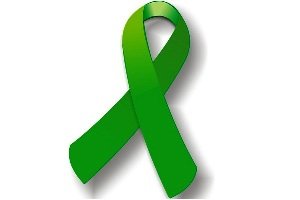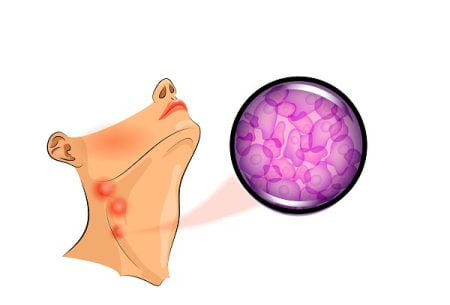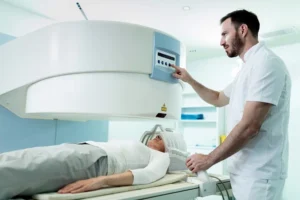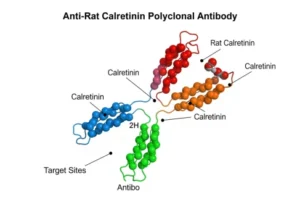Non-Hodgkin Lymphoma Types
- Updated on: Jul 27, 2024
- 4 min Read
- Published on Mar 22, 2019

Non-Hodgkin lymphoma is not a lone disease. In fact there are more than 30 different sub types of non-Hodgkin lymphoma and each one can be broadly divided into the following two main groups:
- B-cell lymphomas – Arise from developing B-cells
- T-cell lymphomas – Arise from developing T-cells.
Both B and T-cell lymphomas are cancers of the lymphatic system, an important part of the immune system. It contains specialized lymphocytes which protects the body from various infections and disease.
Lymphomas arise when developing B and T-lymphocytes undergo a malignant change followed by an uncontrolled multiplication and these abnormal lymphocytes, also called as lymphoma cells, form aggregates of cancer cells called tumors, in lymph nodes, lymph glands and some other parts of the body.
Non-Hodgkin lymphoma types
Non-Hodgkin lymphoma has more than 30 types on the basis of the type of lymphocyte involved (B lymphocytes or T lymphocytes). Non-Hodgkin lymphoma can be further classified on the basis of whether it is aggressive (fast-growing) or indolent (slow-growing).
Types of B-cell lymphoma
B-cell lymphomas are very common as compared to T-cell lymphomas. Almost 9 out of 10 people are diagnosed with NHL i.e, nearly 90% of people have a B-cell lymphoma. B- cell lymphoma has following types:
Diffuse large B-cell lymphoma (DLBCL)
This is one of the most common form of lymphoma. About 30% of NHL in the United States belongs to this type. It is an aggressive form of NHL and most of the times involve organs other than the lymph nodes. Recent researches have shown several other types of DLBCL which involve both germinal center and non-germinal center.
Follicular lymphoma (FL)
Follicular lymphoma (FL) is the second most common form of lymphoma in Europe and the United States. Almost 20% of people with NHL belong to this subtype. It usually begins in the lymph nodes and grows very slowly. Recent Researches have suggested that patients with follicular lymphoma have lived longer over the last few decades. With time follicular lymphoma may turn into DLBCL (transformation) and then requires more aggressive treatment.
Extra-nodal marginal zone B-cell lymphoma
It is also called as MALT lymphoma and is an aggressive type of lymphoma. MALT is very rare in the United States and Europe but more common in Asian and Hispanic communities. It can occur in both children and adults and usually involves the nasal area, sinuses, gastrointestinal tract, skin, testicles, and some other areas of the body.
Mantle cell lymphoma
This type of lymphoma usually involves the bone marrow, lymph nodes, spleen and gastrointestinal system (esophagus, stomach, and intestines). Mantle cell lymphoma is usually identified by a protein called cyclin D1 or by some genetic changes within the lymphoma cells.
Burkitt lymphoma
This is a very rare and aggressive form of lymphoma having 3 forms – Endemic, Sporadic and Immunodeficiency-related lymphoma. Burkitt lymphoma is often curable.
Primary mediastinal large B-cell lymphoma
This is an aggressive form of DLBCL and appears as a large mass in the chest area resulting in breathing. The mass in the chest area often results in superior vena cava (SVC) syndrome which is characterized by many symptoms resulting in partial blockage or compression of the superior vena cava. Mediastinal large B-cell lymphoma is mostly common in women between the age groups of 30 and 40 years.
Nodal marginal zone B-cell lymphoma
This is a rare type of indolent lymphoma that usually involves the lymph nodes. Almost 1% of people with lymphoma belong to this subtype.
Splenic marginal zone lymphoma
This type of lymphoma begins in the spleen and then involves the bone marrow as well as blood. It is very slow growing and therefore is a type of indolent lymphoma.
Small lymphocytic lymphoma
This type of lymphoma is similar to B-cell chronic lymphocytic leukemia (CLL) without a significant amount of disease in the blood. About 5% of people with NHL belong to this subtype. It is also an indolent lymphoma. People with small lymphocytic lymphoma do not require treatment, but instead may receive a watchful waiting.
Lymphoplasmacytic lymphoma (also called Waldenstrom’s macroglobulinaemia)
This is an indolent form of lymphoma and almost 1% of people with NHL belong to this subtype. This form of lymphoma often involves the bone marrow, lymph nodes, and spleen. In some patients, this lymphoma produces a protein, called an “M protein,” in the blood and such a condition is called Waldenstrom’s macroglobulinemia (WM). Patients with WM have high serum viscosity or thickened blood which results in headache, blurry vision, dizziness, and shortness of breath.
Types of T-cell lymphoma
T-cell lymphomas are very less common than B-cell lymphomas. Following are different types of T-cell lymphomas:
Peripheral T-cell lymphoma
This is an aggressive form of lymphoma, commonly found in people older than 60. In the United States and Europe, about 6% of all lymphomas belong to this subtype of lymphomas .The cells of this lymphoma differ in size and produce certain types of proteins on their surface called CD4 or CD8.
Skin (cutaneous) lymphomas
These type of lymphomas include mycosis fungoides and Sézary syndrome and is a form of peripheral T-cell lymphoma almost similar to gamma/delta hepatosplenic T-cell lymphoma. The disease involves the tissues under the skin and is first diagnosed as panniculitis (inflammation of fatty tissues). It is a high-risk aggressive lymphoma.
Mycosis fungoides is a rare T-cell lymphoma that usually involves the skin. It is often an indolent type but sometimes may become more aggressive and spreads to lymph nodes and internal organs.
Anaplastic large cell lymphoma
This subtype of lymphoma particularly involves the skin. It is often indolent, but aggressive subtypes of the disease can be possible.
Angioimmunoblastic lymphoma
This is an aggressive form of lymphoma and has some specific symptoms like enlarged and tender lymph nodes, fever, weight loss, rashes and high levels of immunoglobulins in the blood. Patients with angioimmunoblastic lymphoma have decreased immune system functions, so are very susceptible to infections.
Lymphoblastic lymphoma
This type of lymphoma mainly belongs to T-cell lymphomas but it can be a B-cell lymphoma also.(Already discussed above).
Indolent vs. aggressive lymphomas
NHL types of lymphoma can be grouped into two types on the basis of how fast or slow they grow and spread:
Indolent lymphomas
These lymphomas grow and spread very slowly. Some indolent lymphomas do not require treatment and instead can be watched closely. Follicular lymphoma is the most common type of indolent lymphoma in the United States. Following lymphomas usually come under category of indolent lymphomas:
- Follicular lymphoma
- Lymphoplasmacytic lymphoma
- Cutaneous T-cell lymphoma
- Marginal zone B-cell lymphoma
- Small-cell lymphocytic lymphoma
- MALT lymphoma
Aggressive lymphomas
These lymphomas grow and spread very rapidly and need to be treated as soon as possible. In the United States, the most common type of aggressive lymphoma is diffuse large B cell lymphoma (DLBCL). Lymphomas belonging to this category are:
- Diffuse large B-cell lymphoma
- Anaplastic large-cell lymphoma
- Lymphoblastic lymphoma
- Burkitt lymphoma
- Peripheral T-cell lymphoma
- Mantle cell lymphoma












